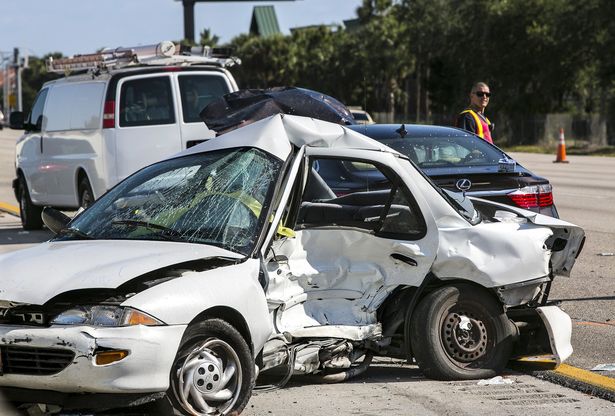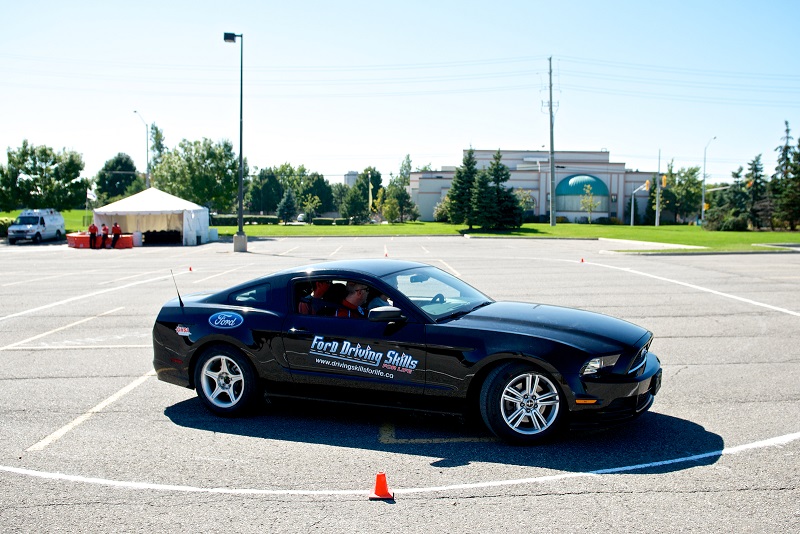A series on Distracted Driving: part one
- Written by David Taylor
- Published in News
- font size decrease font size increase font size
- Be the first to comment!

So perhaps that’s a rhetorical question. Awareness of the issue is one thing. Distracted driving is this generation’s drinking and driving. That’s not to say that it is only an issue with younger, less experienced drivers. It’s not.
Some might argue that there are (too) often articles in newspapers regarding another death in a vehicle where the alleged cause was distracted driving. Others would say there are spots on the local and national news.

All true. But ask yourself this; how many people do you know that either look at, let alone read a newspaper? Same applies to the news on television or radio, for that matter.
Especially if we are talking about a younger demographic. Their information is predominantly presented via social media and SMS. And listening to the radio? Unlikely, unless it’s an online service that may be picked up on their mobile device, tablet or laptop. Same with television. Youth today do not watch TV. Certainly not the way many did less than 20 years ago. Now it’s all about streaming and inexpensive alternatives to visual entertainment from affordable online services.
So how can the message be presented to 15 to 19 year olds – without sounding like a parental lecture?
Easier said than done, to be sure, but the message needs to get across. Distracted driving can cause accidents and kill vehicle occupants – even innocent bystanders. Regardless, if one life can be saved or even one crash (there are very few accidents) avoided, then that is a very good beginning.
Why this demographic? It’s a great starting point. Like anything else, if the message is brought home successfully to these individuals, they too, will share with their peers. Pretty soon, the information gets across – just like a virus – although in this case, it would be the opposite; a vaccine if you will to help safeguard and prepare a generation from unnecessary death and destruction.

Vehicle crashes are the leading cause of death for teenagers in North America. More than 3,000 teens die annually on the roads, according to the most recent data from the National Highway Traffic Safety Administration. There are two major areas which contribute to this alarming statistic: the inexperience of young drivers; and, issues surrounding distracted and impaired driving.
Let’s look at a snapshot of relevant statistics, facts provided by the Insurance Institute for Highway Safety (IIHS) and National Highway and Traffic Safety Administration (NHTSA).
- In 2012, an estimated 2,362,000 people were injured in motor vehicle traffic crashes. The number of people injured in a distraction-affected crash in that year was estimated at 421,000 (18% of all the injured people). An estimated 28,000 persons were injured in crashes involving the use of some kind of cell phone. These injured people in cell phone distraction crashes comprised 7% of all people injured in distraction-affected crashes.
- 15- to 19-year-olds make up the largest proportion of documented distracted drivers and texting while driving kills 11 teens each day.
- In a recent poll, 94% of teens called texting and driving a serious threat – but 35% admitted to doing it anyway.
- 11% of drivers aged 15 - 19 involved in fatal crashes were reported to be distracted and 21% of distracted teen drivers involved in fatal accidents were distracted by cell phones.
- Teen drivers are four times more likely than adults to get into car crashes or near-crashes when talking or texting on a mobile phone.
- A teen driver riding with one other passenger doubles the risk of being involved in a fatal car crash. With two or more passengers, a fatal accident is five times as likely.

One company, the Ford Motor Company is investing corporate profits to establish an initiative called Ford Driving Skills for Life (Ford DSFL). Originally established in 2003 by the not-for-profit Ford Motor Company Fund, the Governors Highway Safety Association and a panel of safety experts in the United States, their mandate is to provide the tools via practical applications to newly licensed teens teaching them the necessary skills for safe driving beyond what they will learn in standard driver education courses.
Today, this progressive initiative is international in scope touching not only the United States but many areas around the world – including Canada. A pilot project ran in Vancouver earlier and last month in north-west Toronto.
Why has this idea met with success? The program is presented to eager students in a hands-on, behind the wheel proposition under the tutelage of expert, professional drivers in a closed circuit environment. Imagine being asked if you wanted to get out of the classroom for a few hours during a normal school day to get behind the wheel of various Ford vehicles – one of which would be a performance-oriented Ford Mustang? No shortage of willing participants wish to sign up! So the initial impression is not a “listen-to-what’s-being-said-there’ll-be-a-quiz-at-the-end-of-the-day” scenario.

Naturally this event is NOT just about distracted driving. That is a very important component, to be sure. Ford has designed the curriculum to examine other important areas when behind the wheel, too. This Ford DSFL event focuses (no pun intended) on four main factors all of which have been proven to contribute to disturbing deadly statistics among this demographic.
Hazard recognition; vehicle handling; speed management; and, space management.
Is an agenda like this effective? Are there immediate benefits? What might future implications be?
In part two, we’ll examine the specifics of Ford Driving Skills for Life – and discover, as Crosby, Stills & Nash once sang, if we should, indeed, “Teach your children”…
